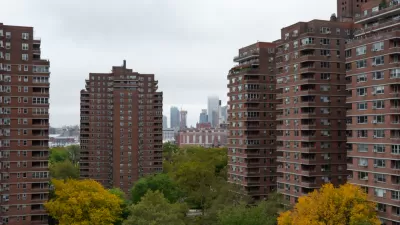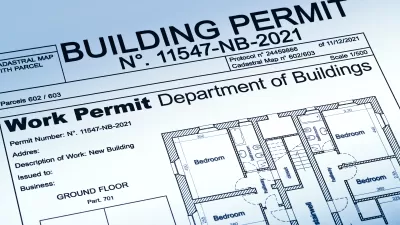Non-profit developers are joining forces to increase their buying power in the pricey New York housing market.

Affordable housing groups in New York are pooling properties under the control of a new member organization, JOE NYC, to help them "get an edge" in the real estate market, Oscar Perry Abello reports for Next City.
Community-based non-profit developers have had a heavy hand in creating and preserving affordable housing in New York since the 1970s, the article notes: Over the past 25 years, they've helped procure 120,000 affordable units in the city.
Today, these developers are faced with an increasingly expensive real estate market and the potential for currently affordable properties to "fall out" of the Low-income Housing Tax Credit incentive program. Joining forces under the JOE NYC umbrella could help them preserve and add to their existing portfolios as well as undertake new construction.
By pooling properties in JOE NYC, the nonprofits can start to combine their buildings in that way to get the bigger loan together, instead of trying for a bunch of smaller loans they might not be able to afford.
On the new construction front, JOE members hope they can partner with community-based nonprofit developers in going after requests for proposals from city agencies for new affordable housing developments — and beat out for-profit developers.
JOE currently has ten member organizations, and expects to build a portfolio of at least 3,000 affordable units over the next year.
FULL STORY: Nonprofits Join Up to Increase Affordable Housing Heft

Planetizen Federal Action Tracker
A weekly monitor of how Trump’s orders and actions are impacting planners and planning in America.

San Francisco's School District Spent $105M To Build Affordable Housing for Teachers — And That's Just the Beginning
SFUSD joins a growing list of school districts using their land holdings to address housing affordability challenges faced by their own employees.

The Tiny, Adorable $7,000 Car Turning Japan Onto EVs
The single seat Mibot charges from a regular plug as quickly as an iPad, and is about half the price of an average EV.

Seattle's Plan for Adopting Driverless Cars
Equity, safety, accessibility and affordability are front of mind as the city prepares for robotaxis and other autonomous vehicles.

As Trump Phases Out FEMA, Is It Time to Flee the Floodplains?
With less federal funding available for disaster relief efforts, the need to relocate at-risk communities is more urgent than ever.

With Protected Lanes, 460% More People Commute by Bike
For those needing more ammo, more data proving what we already knew is here.
Urban Design for Planners 1: Software Tools
This six-course series explores essential urban design concepts using open source software and equips planners with the tools they need to participate fully in the urban design process.
Planning for Universal Design
Learn the tools for implementing Universal Design in planning regulations.
Smith Gee Studio
City of Charlotte
City of Camden Redevelopment Agency
City of Astoria
Transportation Research & Education Center (TREC) at Portland State University
US High Speed Rail Association
City of Camden Redevelopment Agency
Municipality of Princeton (NJ)





























